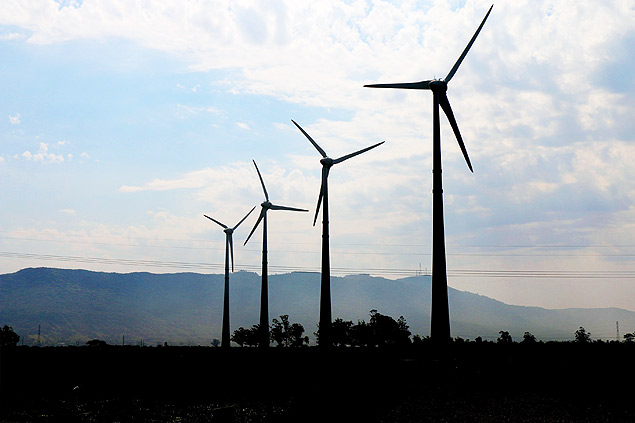Latest Photo Galleries
Brazilian Markets
15h38 Bovespa |
+0,60% | 124.943 |
16h43 Gold |
0,00% | 117 |
15h37 Dollar |
-1,13% | 5,1909 |
16h30 Euro |
+0,49% | 2,65250 |
ADVERTISING
Brazil Anticipates Renewable Energy Goals
08/27/2015 - 09h58
Advertising
MACHADO DA COSTA
COLLABORATION FOR FOLHA
The subject of an agreement between Brazil and the United States, the production of energy via renewable resources has exploded in the country during the last few years-mainly due to investments in wind farms and the production of ethanol.
Currently, the role of these resources in the Brazilian energy supply is so large that the goal of the agreement, considered bold by American standards, should be reached during this decade.
The joint announcement by Dilma Rousseff and Barack Obama establishes that renewable resources should make up between 28 and 32 percent of the energy supply in each country by 2035. Today, the Brazilian energy supply already has an index of 27.9 percent, according to 2014 data compiled by Instituto Acende Brasil.
The calculation leaves out hydroelectric power, which, although renewable, has a significant impact.
Had it been included in the count, renewable resources would already be at 39.4 percent.
The resources considered in the count are reforested wood, ethanol and biomass derived from sugar cane, wind, and solar, among others which still lack interest in Brazil, such as power generation from ocean waves.
For Mathias Becker, president of Renova Energia, the policies in regards to the growth of renewable resources in the Brazilian energy supply are consistent and will create the conditions for even greater participation.
An additional challenge will be to raise the use of these resources in the generation of electricity to 20 percent. But, planning is key.
Since wind and solar light intensity is variable and intermittent, the system has risks.
Furthermore, the greatest potential for this type of power generation exists in the Northeast, which will require a plan to expand to regions with the greatest demand, such as the Southeast.
Today, in the Brazilian production capacity, wind power, solar and biomass resources account for 14 percent while hydroelectric and thermoelectric share 86 percent.
Translated by SUGHEY RAMIREZ
Read the article in the original language
| Foto de Fernando Teixeira/Raw Image/Folhapress | ||
 |
||
| Eolic Park in Osório, Rio Grande do Sul |



